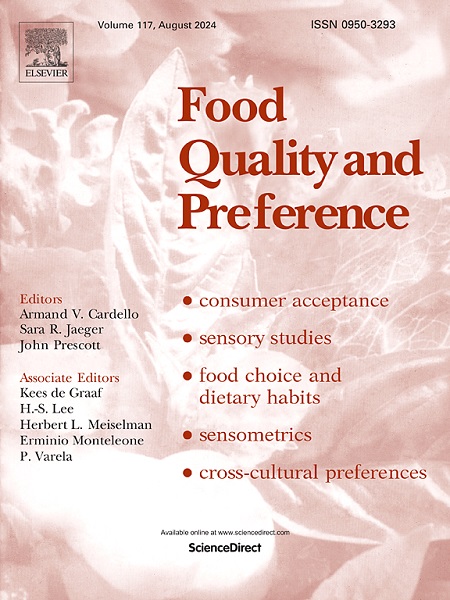家庭饮食生活方式的多样化增加了对植物性食品的购买意愿
IF 4.9
1区 农林科学
Q1 FOOD SCIENCE & TECHNOLOGY
引用次数: 0
摘要
本研究调查了饮食生活方式和家庭动态在塑造欧洲成年人的植物性食品购买意向中的作用。我们首先获得了来自10个欧洲国家的6067名参与者的跨文化数据,这些数据在年龄和性别上是平衡的。然后,我们根据受访者自我报告的饮食生活方式(杂食者和非杂食者)对他们进行分类。我们还根据家庭成员的饮食生活方式对参与者进行了分组,无论受访者是与杂食动物还是非杂食动物生活在一起。然后,我们从各种植物性食品类型的列表中询问参与者他们将来想在多大程度上购买植物性食品。为了确定饮食生活方式和家庭类型之间的相关关系,我们使用卡方关联检验。之后,我们通过方差分析程序确定了被调查群体在植物性食品购买意愿方面的显著差异。我们的研究结果显示,在异质家庭(具有不同饮食生活方式的家庭)中,家庭中非杂食者的存在与杂食者受访者更高的植物性食品购买意愿有关。此外,家庭中有替代饮食的人数对消费者的购买意愿没有任何累加效应。因此,我们的研究强调了家庭构成在塑造饮食选择方面的作用,并强调了非杂食动物家庭推动向植物性食品消费转变的潜力。最后,本研究表明,关注异质家庭之间的关系(而不仅仅是具有不同饮食生活方式的同居者的数量)可以促进植物性消费和减少肉类行为。本文章由计算机程序翻译,如有差异,请以英文原文为准。
Diverse dietary lifestyles within households increase purchase intentions for plant-based food
This study investigates the role of dietary lifestyles and household dynamics in shaping European adults' plant-based food purchase intentions. We first obtained cross-cultural data encompassing 6067 participants, balanced for age and gender from ten European countries. We then classified the respondents based on their self-reported dietary lifestyles (omnivores and non-omnivores). We also grouped the participants based on the dietary lifestyles of the members of their households, whether the respondents were living with omnivores or non-omnivores. We then asked the participants to what extent they would like to purchase plant-based food in the future, from a list of various plant-based food types. To determine pertinent associations between dietary lifestyles and household type, we utilized chi-square association tests. Afterwards, we identified any significant differences across respondent groups in terms of plant-based food purchase intentions through the ANOVA procedure. Our findings revealed that in heterogenous households (households with different dietary lifestyles), the presence of a non-omnivore individual in the household was associated with higher plant-based food purchase intentions of the omnivore respondents. Further, the number of individuals with alternative diets in the household did not have any additive effect towards consumers' purchase intention. Our study thus underscores the role of household composition on shaping dietary choices and highlights the potential for households with non-omnivores to drive shifts towards plant-based food consumption. Finally, this study suggests that focusing on the relationships among heterogeneous households (and not only on the number of cohabitants with varying dietary lifestyles) can promote plant-based consumption and meat reduction behaviors.
求助全文
通过发布文献求助,成功后即可免费获取论文全文。
去求助
来源期刊

Food Quality and Preference
工程技术-食品科技
CiteScore
10.40
自引率
15.10%
发文量
263
审稿时长
38 days
期刊介绍:
Food Quality and Preference is a journal devoted to sensory, consumer and behavioural research in food and non-food products. It publishes original research, critical reviews, and short communications in sensory and consumer science, and sensometrics. In addition, the journal publishes special invited issues on important timely topics and from relevant conferences. These are aimed at bridging the gap between research and application, bringing together authors and readers in consumer and market research, sensory science, sensometrics and sensory evaluation, nutrition and food choice, as well as food research, product development and sensory quality assurance. Submissions to Food Quality and Preference are limited to papers that include some form of human measurement; papers that are limited to physical/chemical measures or the routine application of sensory, consumer or econometric analysis will not be considered unless they specifically make a novel scientific contribution in line with the journal''s coverage as outlined below.
 求助内容:
求助内容: 应助结果提醒方式:
应助结果提醒方式:


